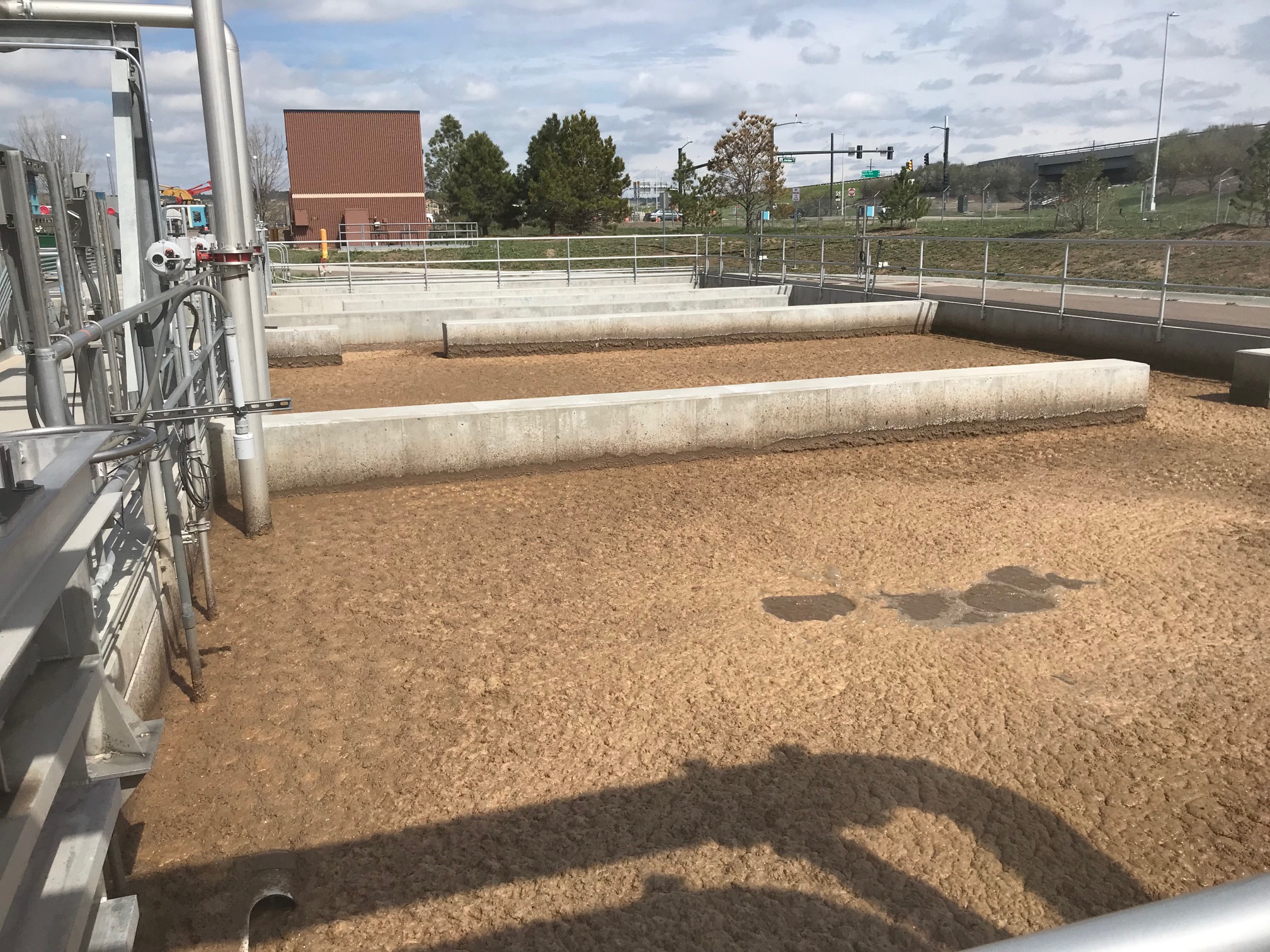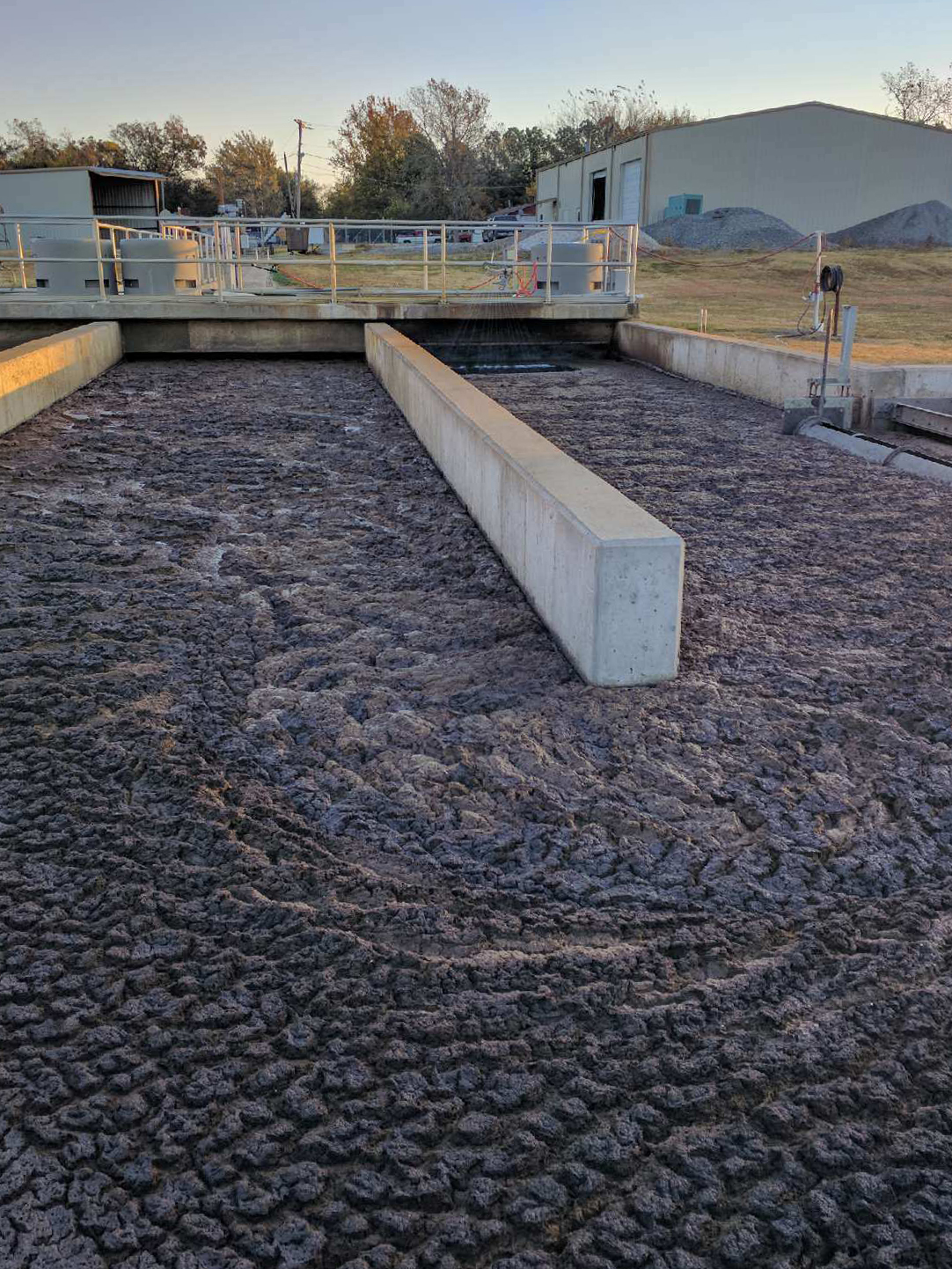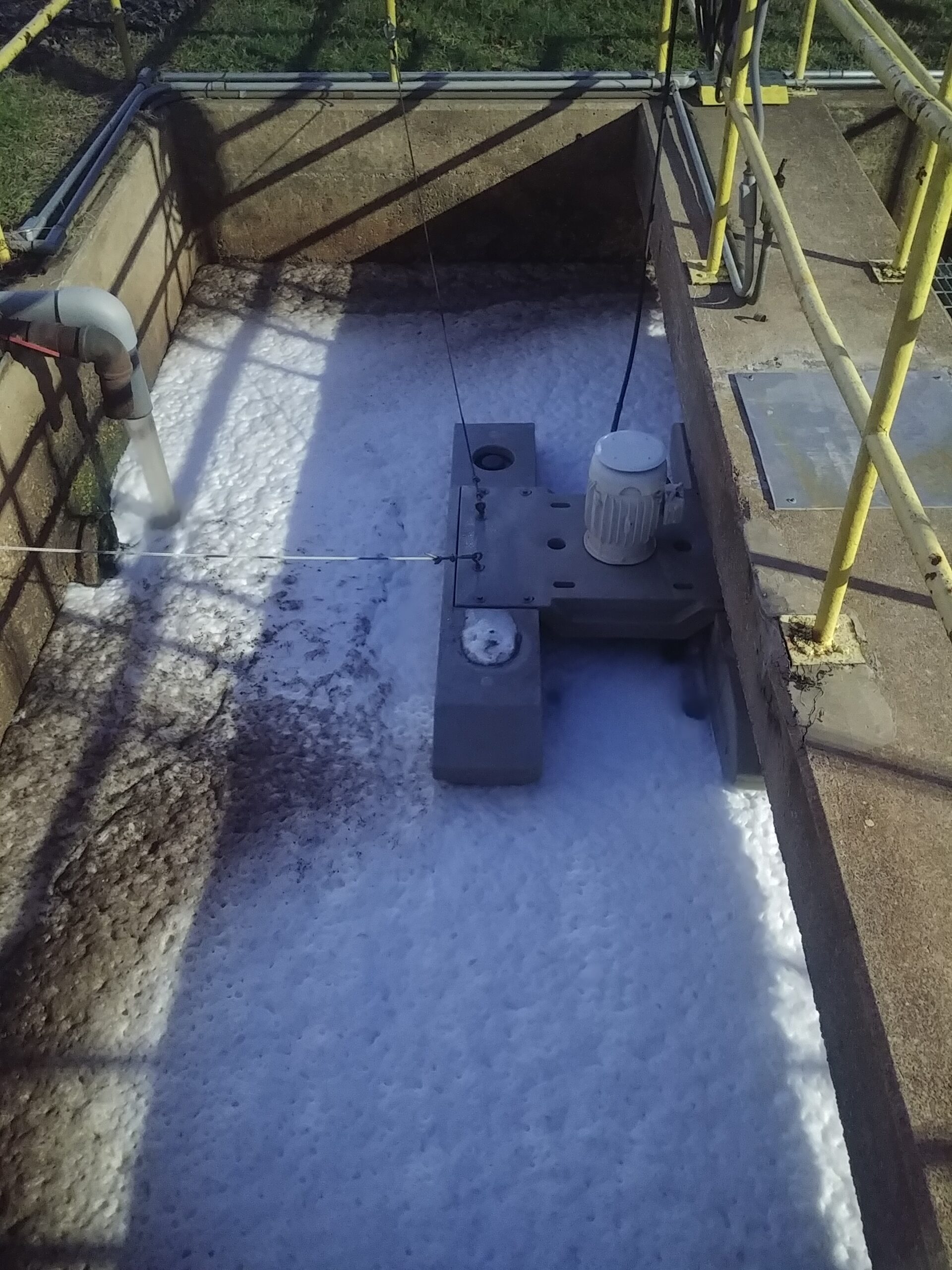
Three filamentous organisms can cause activated sludge foaming: Nocardia and Microthrix parvicella (commonly) and type 1863 (rarely).
Nocardial foam occurs as a thick, stable, brown foam or “scum” inches to many feet thick on aeration basin and final clarifier surfaces. Normal scum traps (too small) and water sprays (too weak) may be useless to control this type of foam. This foam consists of activated sludge solids (flocs) containing large amounts of Nocardia filaments growing from their surface and is quite stable, compared to most other foams, due to the physical “interlocking” of the Nocardia filaments. These foams are easy to diagnose microscopically – they are dominated by branched, gram positive filaments and a simple gram stain of the foam is all that is needed. The analysis should include comparison to the underlying MLSS.
Nocardial foams occur in all types of plants, with no particular association with specific modes of operation or aeration. These foams may be more severe in plants with fine bubble or jet aeration and in oxygen activated sludge plants. These foams also occur equally in plants treating domestic, industrial and mixed wastes. Industrial wastes promoting Nocardia growth (and foaming) include dairy, meat and slaghterhouse, food processing, pharmaceutical, and any others that contain a significant amount of grease, oil or fat. Nocardial foaming is also associated with high-density restaurant operation in recreational areas. Nocardial foaming has been observed to be caused by treatment of locomotive and truck washing wastes.
Severe Nocardial foams cause a number of operational problems. These include aesthetics, odours, and safety hazards if they overflow basins to cover walkways and handrails. Foam may escape to the effluent, increasing effluent suspended solids and compromising disinfection. In covered aeration basins, foam can accumulate to exceed the available hydraulic head for gravity flow of wastewater through the basin. Process control can be compromised if a significant fraction of plant’s solids inventory is present in the non-circulating foam.

The three filaments that cause foaming all grown on grease and oil, and these can become a problem when grease and oil are high in amount in the influent wastewater. Systems that lack primary clarification (the main grease and oil removal mechanism) appear to suffer more foaming problems.
Note that Nocardia here is used as a group name rather than a specific species. Recent work has shown that a number of actinomycetes can cause foaming and include Nocardia Amarae, N. pinensis, N. rhodochrus and other Nocardia-like species. These are often collectively referred to as the Nocardioforms, or the foam-causing actinomycetes.
Nocardia and Microthrix parvicella also occur at a longer sludge age. The sludge age at which these filaments can be controlled is a function of the wastewater temperature, being lower at higher temperature. Nocardia appears to be favored at higher aeration basin temperatures and Microthrix parvicella at lower aeration basin temperatures. Nocardia can usually be controlled by a sludge age below 6-8 days and M. parvicella at a sludge age below 8-10 days at moderate wastewater temperatures. However, many plants have had to reduce the sludge age to less than 2 days for Nocardia control, and this may be inconsistent with other process goals, such as nitrification or sludge handling capability.
A third factor in the growth of Nocardia and M. parvicella is septicity or low oxygen conditions. Note that the combination of grease and oil, longer sludge age, and septicity or low oxygen conditions is needed for these filaments to overgrow the system and cause foaming. In this regard, Nocardia and M. parvicella can be considered “low DO filaments”, although low DO per dec doesn’t cause them without the other two factors.
Type 1863 differs in growing at a low sludge age, usually less than 3-4 days. It indicates a high amount of grease and oil and young sludge condition. Many type 1863 foaming episodes have been caused by a reduction in primary clarification when units were removed from service for repair or cleaning and grease and oil concentration increased in the aeration system.
Control of Nocardia and M. parvicella foaming is difficult. Chemical antifoam agents have not proven generally effective, probably because these act on chemical surfactants and not on a solids-stabilized foam. Many plants reduce aeration to control foaming, but process performance may suffer if oxygen becomes limiting. Further, low oxygen-induced bulking may occur when this is done.

Physical control of foams is most widely practiced using enlarged surface scum traps and forceful water sprays (often containing 50 mg/L chlorine). Many foams reach problem levels because they build up on these surfaces and are not removed. Foam should be removed entirely from the system and not recycled back into the plant, for example, into the headworks. Foam disposal into aerobic or anaerobic digesters can result in foaming there, so this should be avoided.
Return sludge chlorination has not eliminated Nocardia, although it often helps, due to Nocardia’s growth mostely within the activated sludge flocs where it isn’t readily contacted by chlorine. Also, much of the Nocardia may be present on the aeration basin surface and this doesn’t go through the RAS line to see chlorine. RAS chlorination is more useful for foams caused by M. parvicella.
Many anaerobic digester foaming incidents may be attributed to treatment of Nocardia-containing waste activated sludge. Here it is important to remember that Nocardia cells float, dead or alive, due to their hydrophobic (water fearing) cell surface. Even though Nocardia are strict aerobes, their cells are readily floated and cause foaming even under anaerobic conditions.
Nocardia and M. parvicella are controlled by addressing all three causative factors above. A reduction in the grease and oil content of the wastewater is needed, either through source control or improved operation of the primary clarifier (if present) to better remove grease and oil. These filaments are usually controlled by a reduction in the system sludge age as given above. Septicity, if present, needs to be controled, and the aeration basin DO concentration should be raised. Note that higher aeration causes more foam formation, due to the physical action of more air present. Many operators reduce aeration when foaming occurs to reduce the foam, but this only causes more filament growth in the long term.
